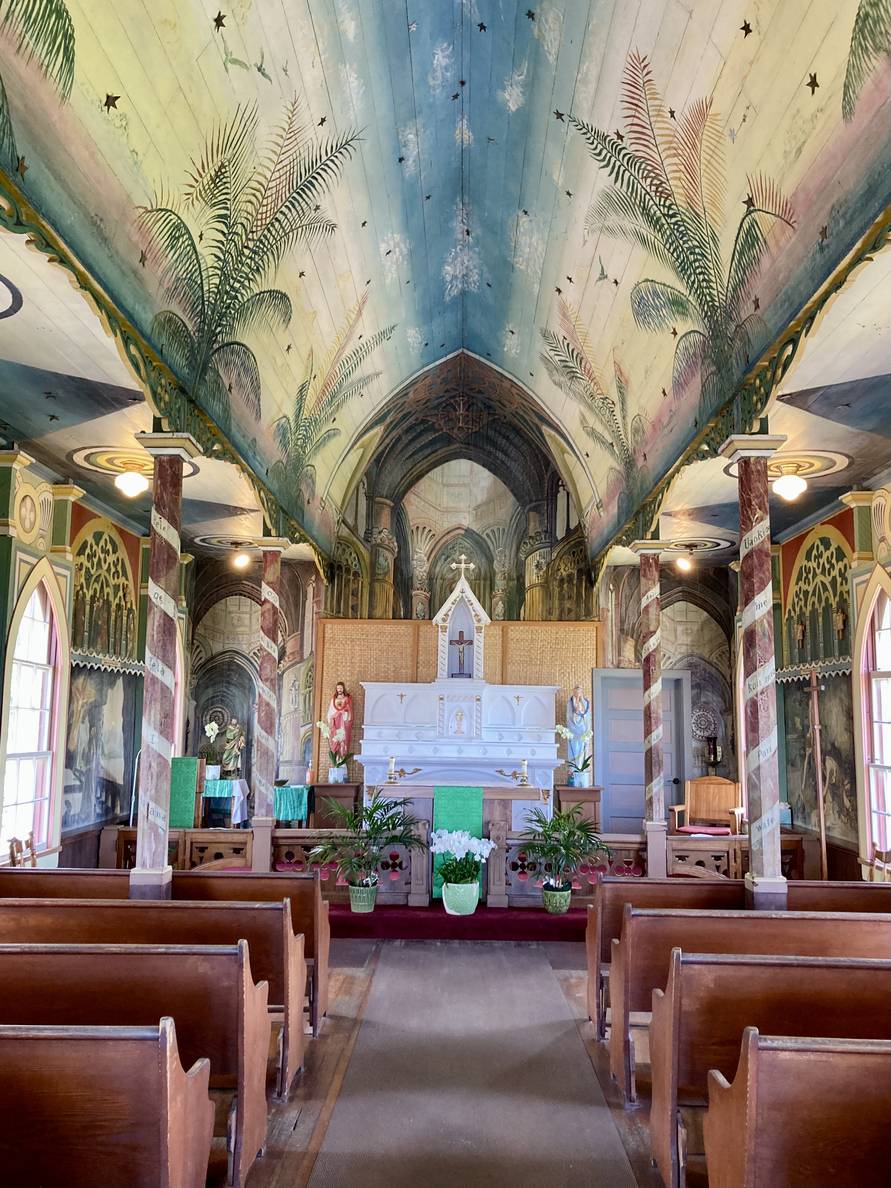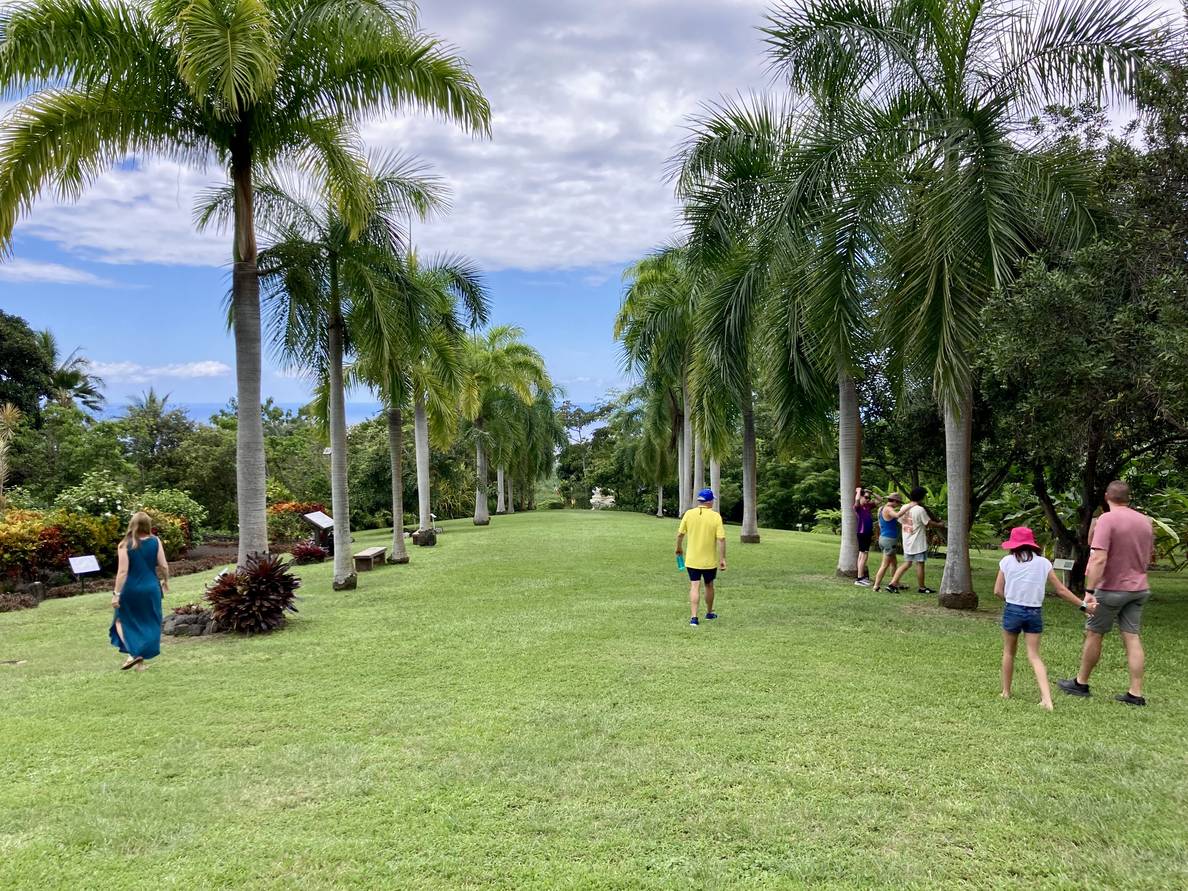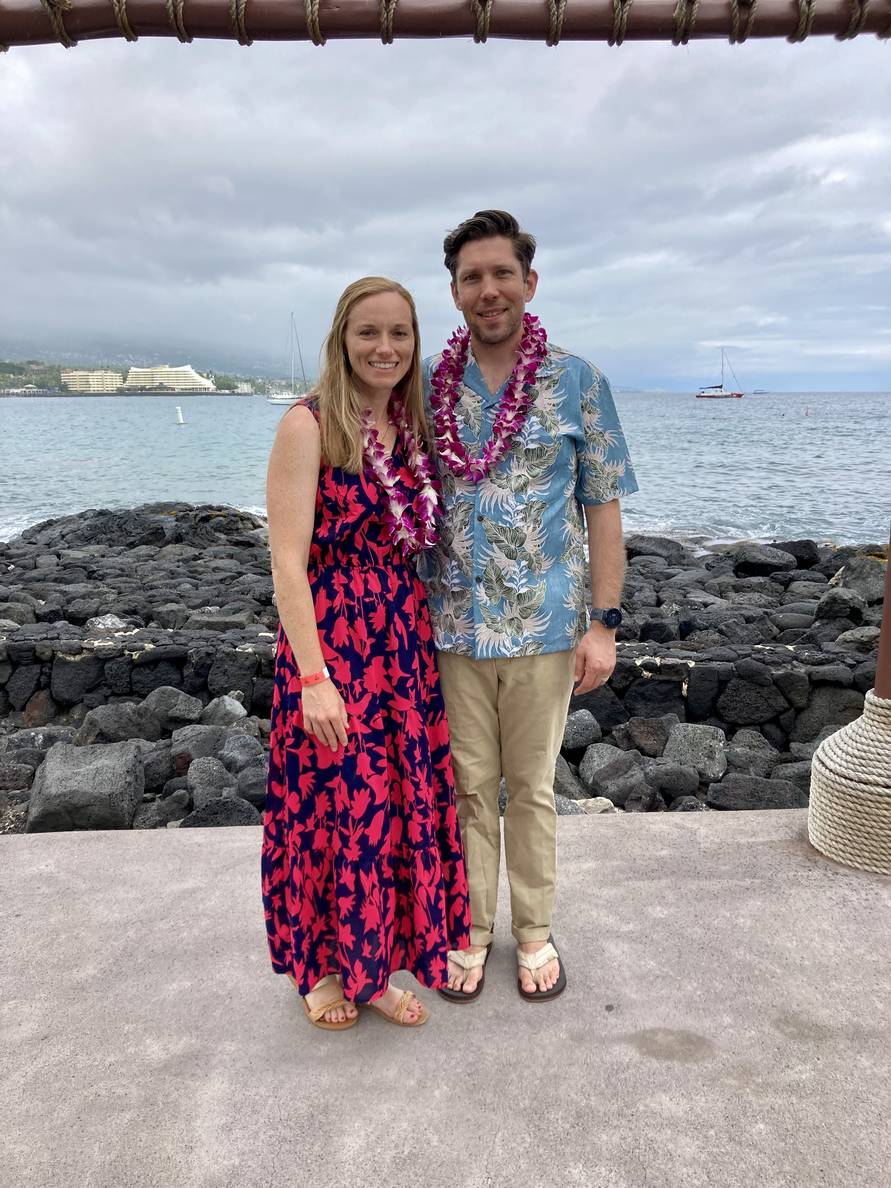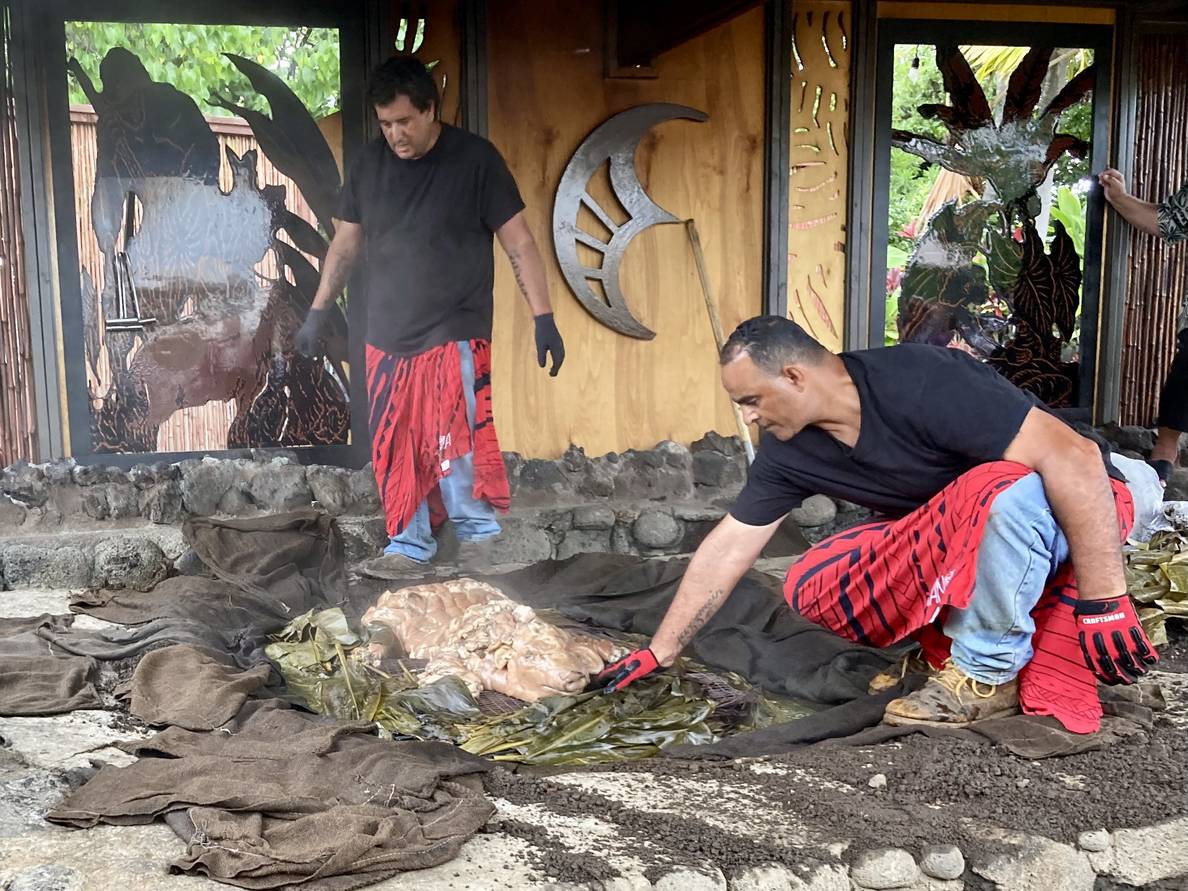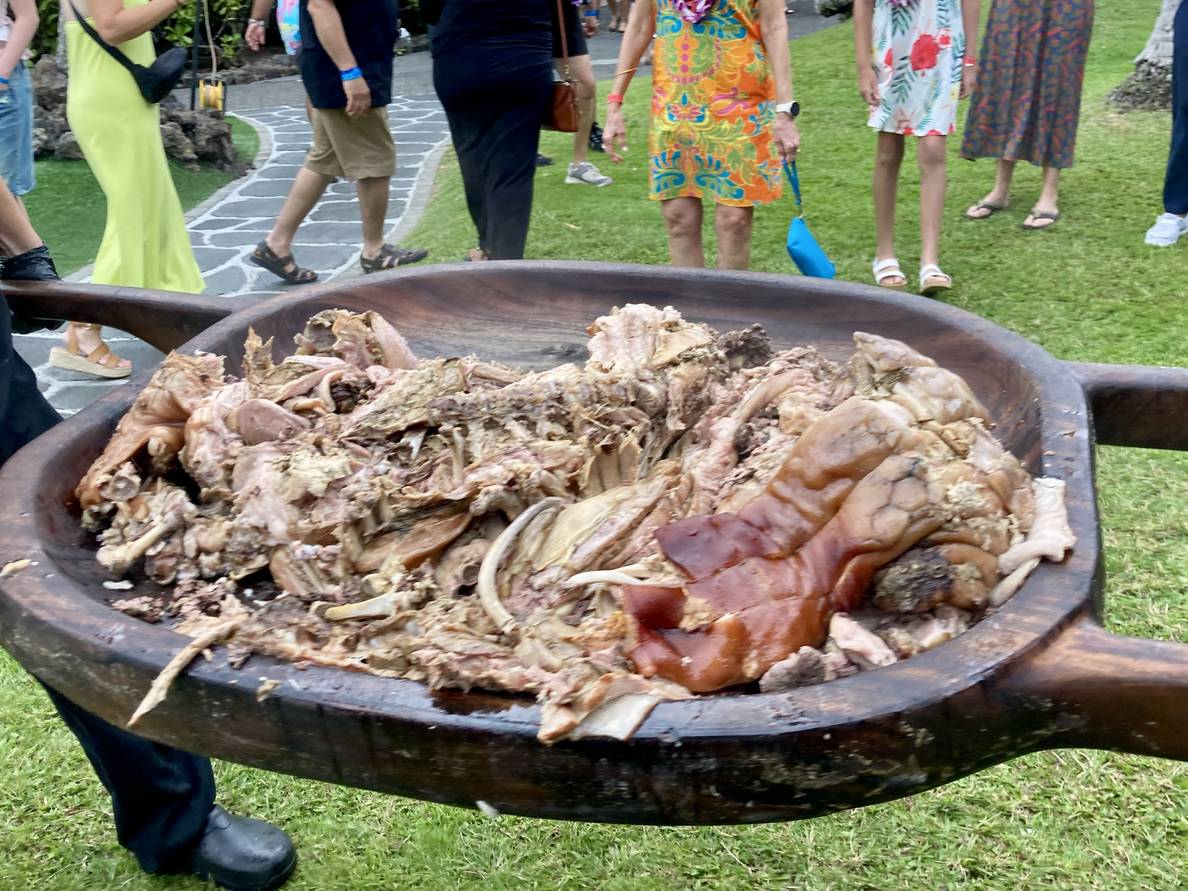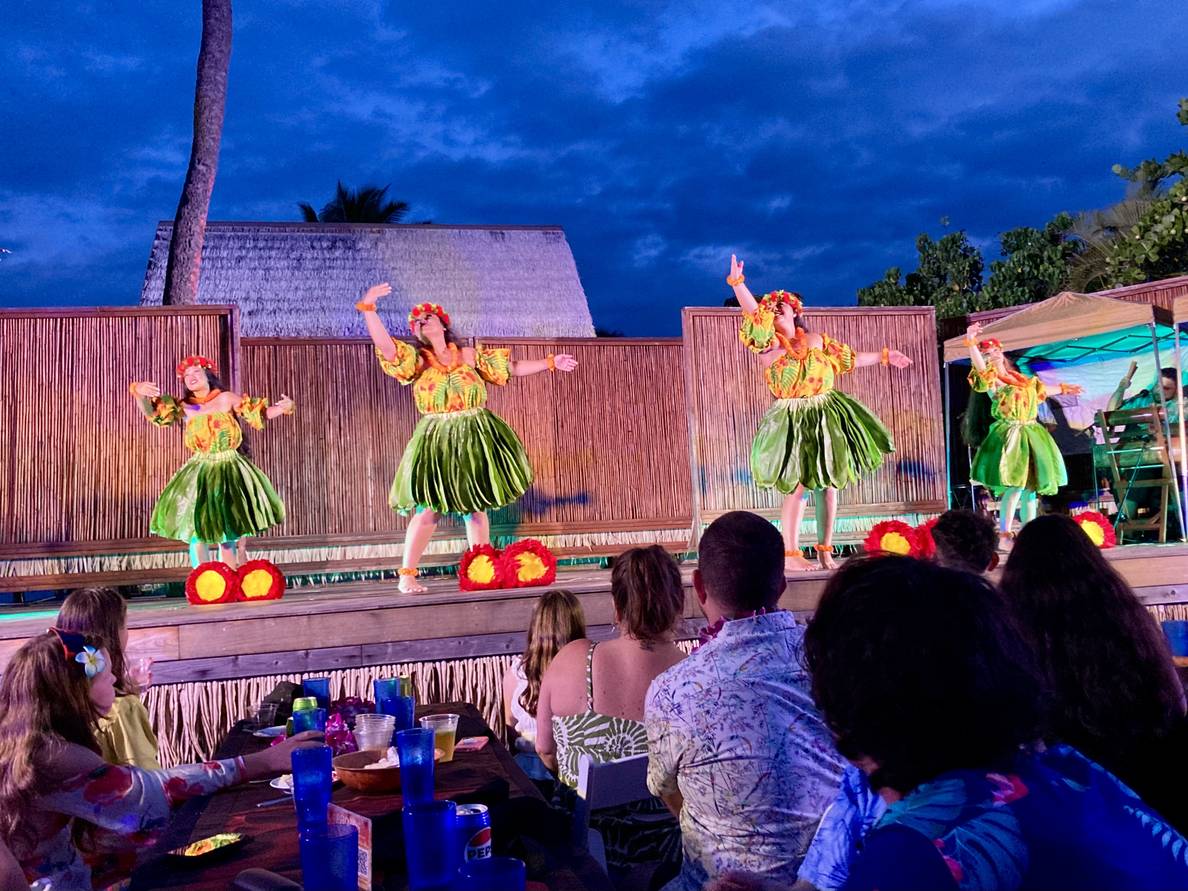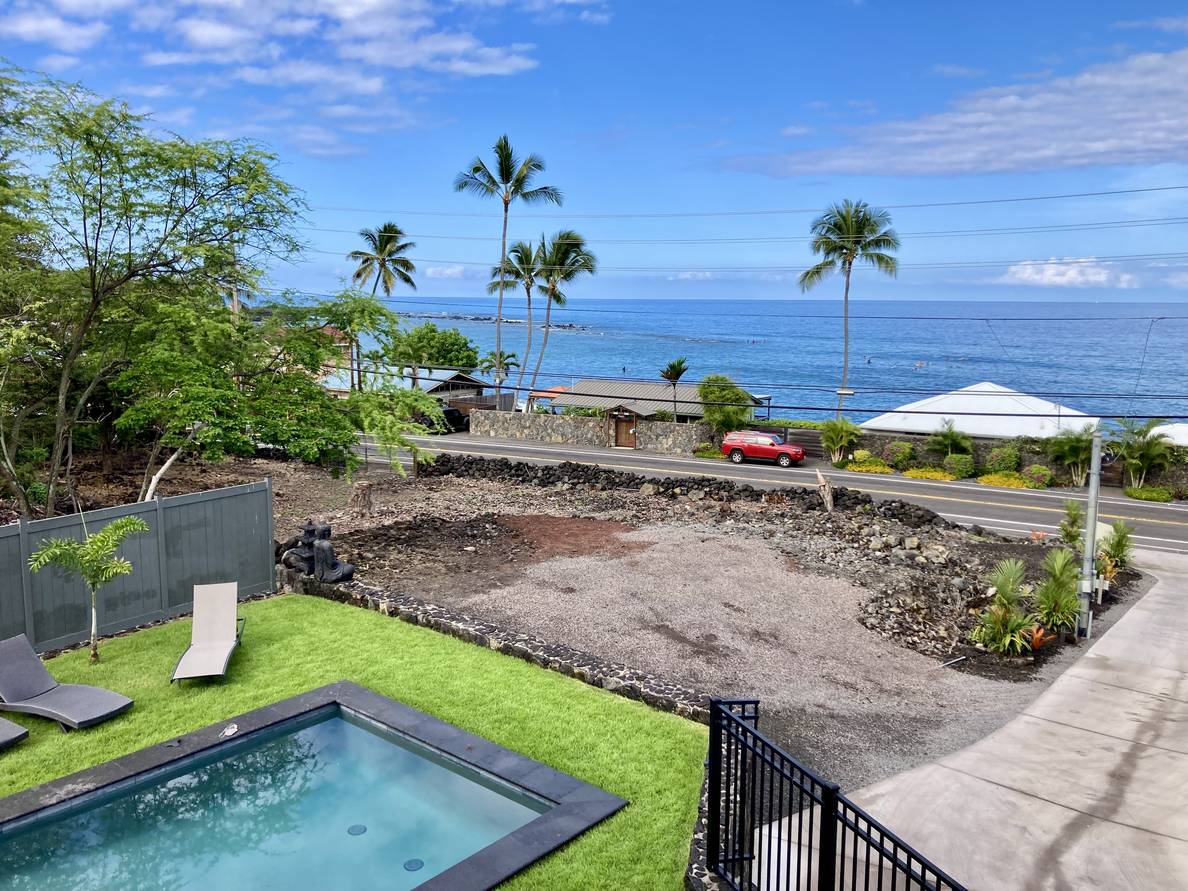
Today we explored south Kona in the morning and attended a lūʻau in the evening.
Team Charlotte (my older brother’s family) and my son started the day with a surfing lesson at nearby Kahaluʻu. After they were back and everyone had breakfasted and showered, we headed south.
We stopped first at Greenwell Kona coffee farm. The tours were an hour long, and no one was interested in spending that much time there. We did a quick coffee taste of their different blends, and then headed on our way.
Next we went to Puʻuhonua o Hōnaunau, a “place of refuge.” In ancient Hawaiian culture, “kapu” was the code defining forbidden actions. Breaking kapu meant death, as they believed that it would otherwise result in disasters. If a kapu-breaker managed to make it to a place of refuge, they could work off their violation in safety and then could be accepted back into their community. We took a short walk around the area and saw a reconstruction of a temple that would house royal bones.
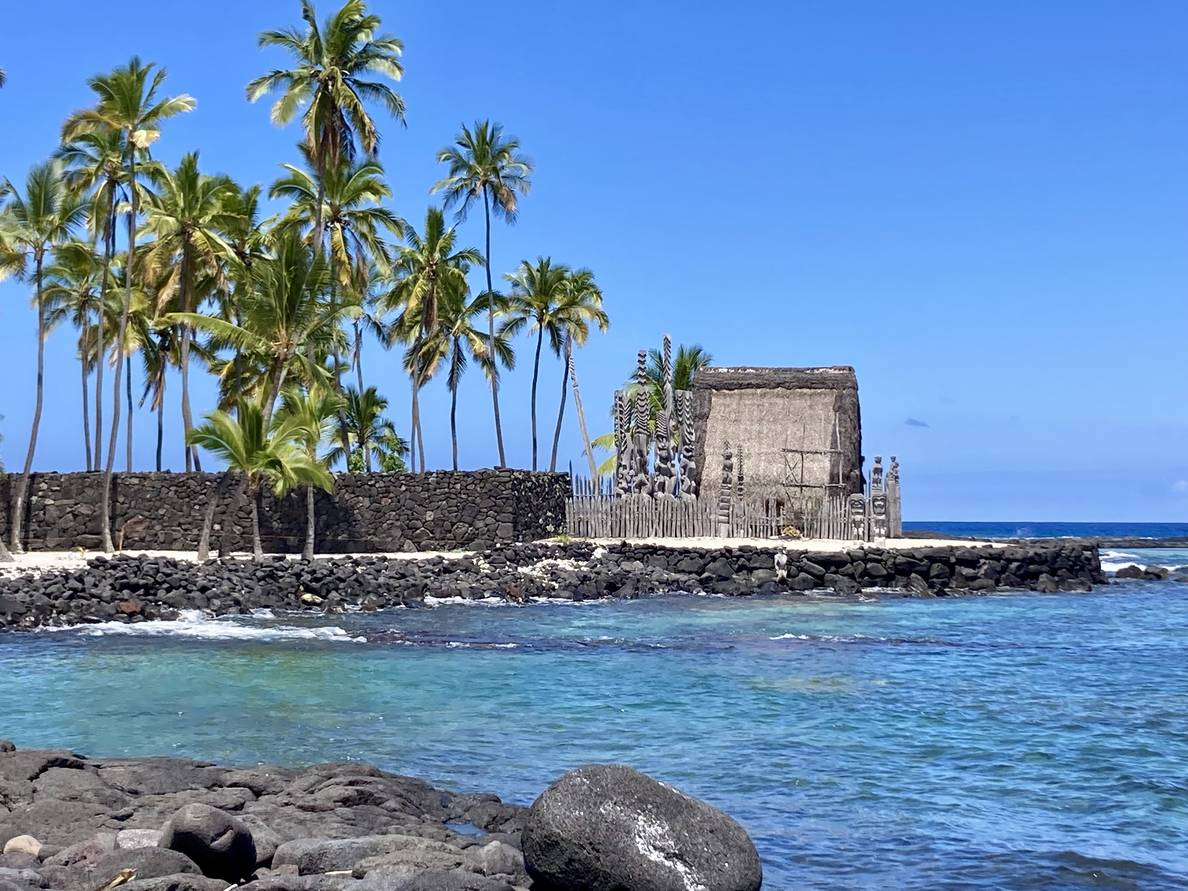
We then drove to The Painted Church. This small church’s interior is floor to ceiling murals. According to the attendant, the priest who started the church did not speak Hawaiian at first, so he would paint scenes to communicate.
We ate at South Kona Grindz for lunch. It was a Hawaiian-Mexican spot. I had their taco Tuesday special of three ono tacos, one with pineapple slaw, one with pineapple salsa, and the last with cheese and lettuce. Megan had the poke nachos. It was all tasty.
After lunch we went to Paleaku Gardens, a “peace garden.” It was much bigger than I expected and had multiple shrines and symbolic structures from many different faith traditions. The plants were beautiful. The signs noted if the plant was native or introduced. I think I only saw one plant that was native to Hawaiʻi, a couple that were introduced by polynesian settlers, and the rest were all introduced. I don’t think it’s that the garden specialized in introduced species, but rather so much of the flora and fauna here has been introduced.
We regrouped briefly at the house before going to King Kamehameha Hotel for their lū’au.
We got checked in and given real flower leis. On our way to our table we got mai tais (the kids got fruit punch). The venue was outside with a stage for the musicians and performers. There were lots of tables for the guests. We were seated at a big table to ourselves, but I understand shared seating is the norm. When the kālua pig was ready, the host invited everyone over to the underground oven area where two men began unearthing a whole pig that had been cooking wrapped in banana leaves and ti leaves over stones and mesquite wood.
After they unearthed and unwrapped it, they picked it up by the metal grate it had been placed on and transferred it to a platter to carry it to a carving station.
The food was served buffet style. I had a kale salad with tofu, a pickled cucumber dish, a salmon dish, tuna poke, poi, and the pork. I understand poi is a very traditional Hawaiian food, made of pounded taro root. It’s kind of a gray gloop, and kind of tasted like that. Not bad, but not good either. Given its importance in Hawaiian food culture, I was excited to try it and glad I had the opportunity to do so.
The show incorporated hula, of course, but also information, dances, and music from other Polynesian islands. Hawaiʻi was settled by Tahitians, so Tahiti was introduced, as well as Aotearoa/New Zealand, Samoa, and Fiji (though they noted that Fiji is Melanesian but traded a lot with Polynesian Samoa and Tonga, so they included it).
They had all of the guests participate in learning a hula dance as well as a song for couples to dance to. It was a lot of fun.

